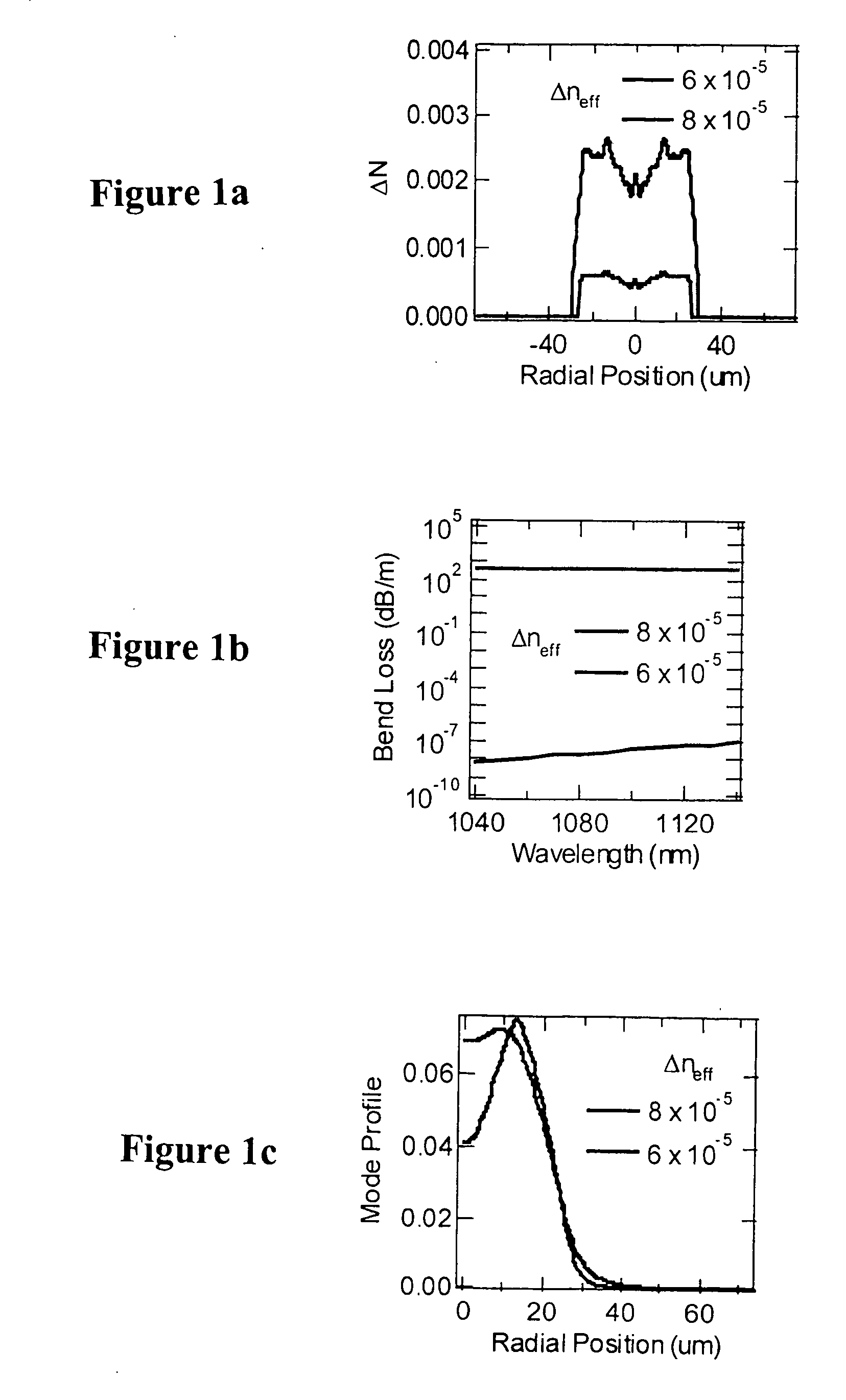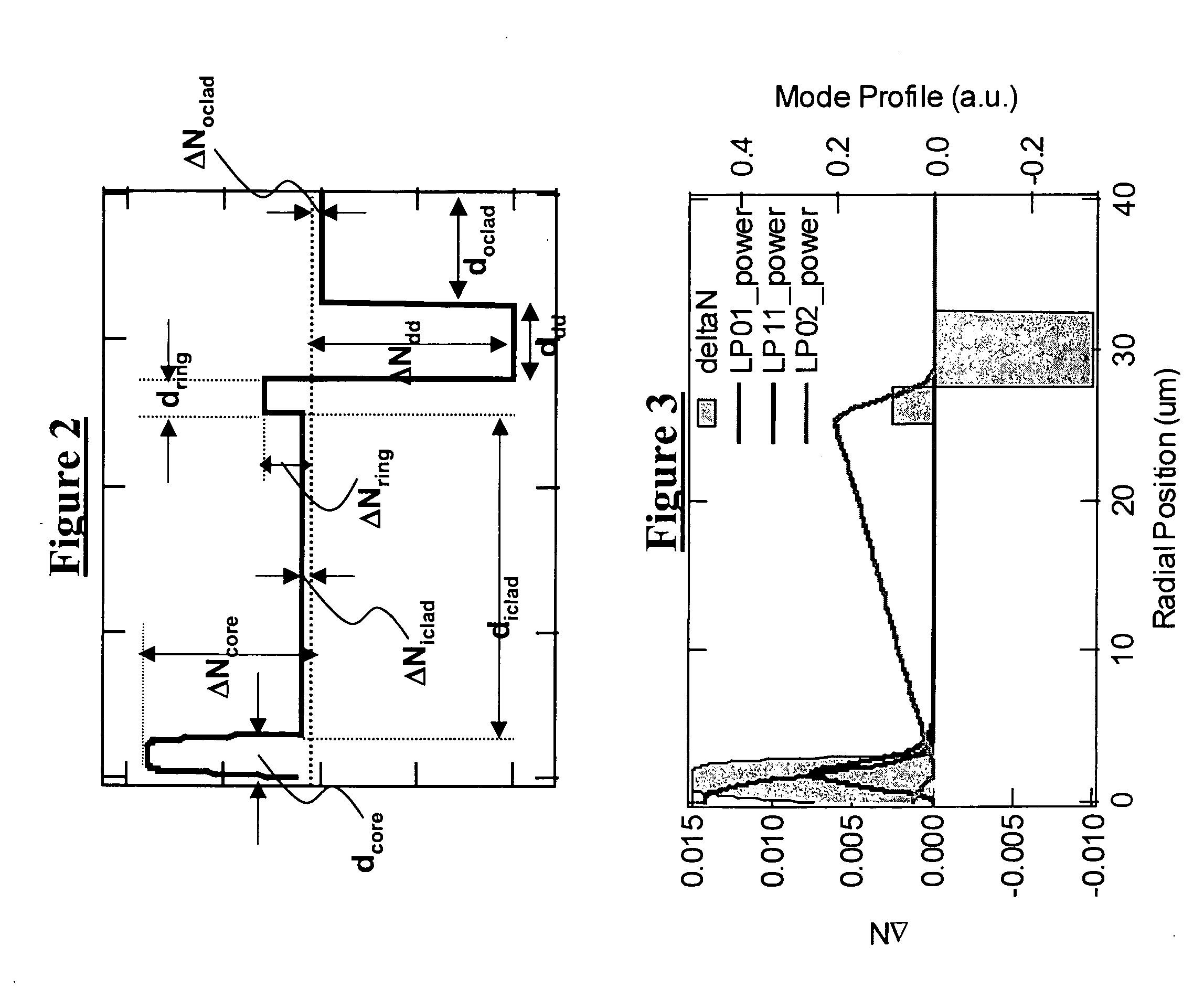Large mode area fibers using higher order modes
a fiber and higher-order technology, applied in the field of optical fiber devices, can solve the problems of low mode coupling performance of fibers, and achieve the effects of large mode area, good bend loss performance, and large spacing
- Summary
- Abstract
- Description
- Claims
- Application Information
AI Technical Summary
Benefits of technology
Problems solved by technology
Method used
Image
Examples
Embodiment Construction
[0029] As mentioned previously, two distinct embodiments of fiber designs suitable for the gain section of the devices of the invention will be described. These are illustrative of optical fibers wherein the HOM is the LP02 mode, but the invention can be implemented with any HOM guided by the fiber. It should also be understood that other optical fiber designs may be found useful for obtaining the high effective area performance demonstrated by the two designs shown here. These optical fibers are examples of a category of optical fibers known as few mode fibers. They have a mode field larger than a single mode fiber.
[0030] The ring design optical fiber has a central core and one or more high index rings (with Δn>2×10−3) of thickness greater than 2 μm, followed by a deep down doped region (Δn40 μm. For designs utilizing the wavelength selectivity of mode converters, this invention is advantageous even with small (6-10 μm) MFD fiber.
[0031]FIG. 2 shows the canonical refractive index ...
PUM
 Login to View More
Login to View More Abstract
Description
Claims
Application Information
 Login to View More
Login to View More - R&D
- Intellectual Property
- Life Sciences
- Materials
- Tech Scout
- Unparalleled Data Quality
- Higher Quality Content
- 60% Fewer Hallucinations
Browse by: Latest US Patents, China's latest patents, Technical Efficacy Thesaurus, Application Domain, Technology Topic, Popular Technical Reports.
© 2025 PatSnap. All rights reserved.Legal|Privacy policy|Modern Slavery Act Transparency Statement|Sitemap|About US| Contact US: help@patsnap.com



